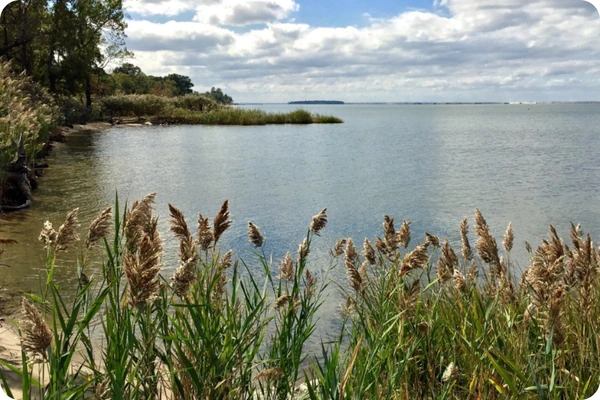Clean water starts with understanding where it goes when it rains. Stormwater runoff plays a major role in shaping our communities, our infrastructure, and the health of the Chesapeake Bay watershed. Yet many property owners don’t realize how their own roofs, parking lots, and landscaped areas affect local water quality.
This guide breaks down what stormwater runoff is, why it matters, and what you can do to manage it responsibly.

What Is Stormwater Runoff?
Stormwater runoff is the rain or melted snow that doesn’t soak into the ground. Instead, it flows over hard, impervious surfaces like:
-
Asphalt parking lots
-
Concrete sidewalks
-
Building roofs
-
Compacted soil
When water can’t infiltrate the ground, it finds the easiest path downhill – carrying with it whatever pollutants it encounters. This might include:
-
Sediment from bare soil or construction sites
-
Nutrients from fertilizers or yard waste
-
Oil and grease from vehicles and parking areas
-
Trash and debris washed from streets
According to the U.S. Environmental Protection Agency (EPA), stormwater runoff is one of the leading causes of water pollution nationwide. The issue isn’t just the quantity of runoff – it’s the quality.
Why Is Runoff a Problem?
In natural environments like forests and meadows, most rainfall infiltrates into the soil. The ground filters and cleans the water before it recharges groundwater or enters nearby streams. But when land is developed, impervious surfaces prevent infiltration.
That change has two major consequences:
1. More Water, Faster
Stormwater moves quickly over pavement and rooftops, collecting volume and speed. This surge in flow:
-
Increases flooding risk
-
Causes streambank erosion
-
Overwhelms storm drains and detention systems
2. More Pollution, Less Filtration
Because the water never filters through soil, pollutants have no chance to settle out. Runoff can carry sediment, oil, heavy metals, pesticides, and bacteria directly into storm drains – and ultimately, into local waterways.
Over time, these pollutants accumulate in downstream ecosystems, damaging aquatic habitats and degrading water quality.
The Connection Between Runoff and the Chesapeake Bay
For communities in Maryland, Virginia, Delaware, and the District of Columbia, every drop of runoff eventually makes its way to the Chesapeake Bay, the largest estuary in the United States.
The Chesapeake Bay Program reports that stormwater runoff is the only major source of Bay pollution still increasing. It carries nitrogen, phosphorus, and sediment – the same pollutants that fuel algae blooms, reduce oxygen levels, and smother habitats for fish, crabs, and oysters.
That means even small changes at the local level – a clogged inlet, an eroding outfall, or a neglected retention pond – can ripple downstream and affect the health of an entire ecosystem.
Understanding the basics of stormwater runoff isn’t just about property management; it’s about protecting the Bay.
Common Types of Stormwater Runoff
While every site is unique, stormwater runoff generally falls into three main categories:
-
Surface Runoff
Water flowing over the land surface – the most visible type. It occurs when rain exceeds the soil’s ability to absorb it. -
Subsurface Runoff (Interflow)
Water that infiltrates shallow soil layers and moves laterally underground toward streams. Though less visible, it can carry dissolved nutrients and pollutants. -
Urban Runoff
A specific subset of surface runoff, common in developed areas with lots of pavement and buildings. Urban runoff is often the most polluted and most challenging to control.
How Stormwater Management Helps
Stormwater management aims to slow down, spread out, and soak in runoff as close to where it falls as possible. The goal is to mimic natural hydrology and reduce both flooding and pollution.
Common solutions include:
Green Infrastructure
-
Bioretention areas and rain gardens that filter runoff through plants and soil
-
Permeable pavers that allow rain to soak through instead of pooling
-
Green roofs that absorb rainfall and reduce heat islands
Structural Systems
-
Detention and retention ponds that temporarily hold runoff
-
Infiltration trenches that allow water to percolate into the ground
-
Stormwater filters and proprietary systems that remove pollutants before discharge
Properly designed, installed, and maintained systems reduce the volume and velocity of runoff, protect local infrastructure, and improve downstream water quality – all while helping communities meet EPA and local MS4 permit requirements.
Why Stormwater Runoff Matters for Property Owners
For commercial and residential property managers, understanding stormwater runoff isn’t optional – it’s a responsibility. Improperly managed runoff can lead to:
-
Flooding and property damage
-
Erosion and landscape loss
-
Regulatory violations
-
Costly repairs to clogged or failing drainage systems
Routine stormwater inspections and maintenance help prevent these issues. By keeping systems clear, identifying damage early, and maintaining compliance, property owners can protect both their investments and the environment.
The Chesapeake Bay Connection, Revisited
Every storm drain in our region leads to a local stream – and every local stream leads to the Chesapeake Bay. Even if your property is miles from the Bay itself, the stormwater leaving your site contributes to the larger watershed.
That’s why the region’s stormwater permits and best management practices are designed not only to protect your property, but also to restore and safeguard the Bay for future generations.
Key Takeaways
-
Stormwater runoff is rainfall or snowmelt that doesn’t soak into the ground.
-
Impervious surfaces accelerate runoff, increasing pollution and erosion.
-
Runoff is a major pollution source for waterways, including the Chesapeake Bay.
-
Stormwater management systems (like ponds, filters, and bioretention areas) help reduce impacts.
-
Property managers and owners play a critical role in keeping local waters clean.
Partner With Experts in Stormwater Management
Understanding the basics is only the first step – maintaining effective stormwater systems is what truly protects your property and the environment.
At iSTORMWATER, our team provides stormwater inspections, maintenance, andcompliance services throughout Maryland, Northern Virginia, Washington, D.C., and Delaware. We help commercial property owners meet regulations and reduce their environmental footprint – one drop at a time.
📞 Call us at (410) 231-3455 or 💬 Contact us online.




